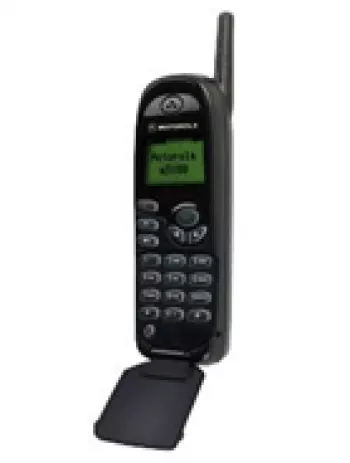
Introduction to the Motorola V60
The Motorola V60 was launched in the early 2000s and soon became a symbol of advanced mobile technology at the time. Despite its minimalist design compared to current smartphone standards, it was a pioneer in blending design with functionality in the mobile industry. Released in the fourth quarter of 2001, this device was widely popular due to its compact flip design and robust build quality. This article delves into the various aspects of the Motorola V60, from its technical specifications to its impact on mobile communication.
Design and Build
The Motorola V60 featured a distinctive clamshell design that was both stylish and functional, measuring 87 x 45 x 24 mm and weighing just 109 grams. This compact size made it easy to carry in pockets and purses, a significant advantage over some bulkier devices available during that period. Constructed with durable materials, it was built to withstand daily wear and tear, which contributed to its widespread appeal. Its elegant form factor with a robust hinged mechanism not only provided aesthetic appeal but also protected the keypad and screen when closed.
Display
The Motorola V60 was equipped with a monochrome graphic display, with a resolution of 96 x 64 pixels in a 3:2 ratio. While it may seem rudimentary by today’s standards, the display was crisp and clear for its time, fulfilling basic visual needs such as viewing text messages and navigating through menu options. Its simplicity was valued by users who preferred a straightforward, no-nonsense interface.
Network and Connectivity
Supporting GSM technology, the Motorola V60 operated on 900/1800/1900 bands, making it versatile for use in various regions around the world. Despite the lack of modern connectivity options like Bluetooth, WLAN, or GPS, the device was fitted with Class 8 GPRS, providing users with basic data service for simple internet browsing through WAP 1.1.
Memory and Storage
While the Motorola V60 did not feature expandable memory via card slots, it came with ample built-in memory that could store up to 500 contacts in its phonebook. Additionally, it had the capacity to log 10 dialed, 10 received, and 10 missed calls—a capability that was more than sufficient for the average user at the time.
Battery Performance
The device was powered by a removable Li-Ion 700 mAh battery, specifically the model SNN5704, ensuring that users could carry extra batteries for prolonged usage. The battery life was quite commendable, offering up to 130 hours of standby time and up to 3 hours of talk time, which was substantial for users on the go.
Sound and Alerts
The Motorola V60 utilized monophonic ringtones and vibration as its primary alert features. Although there was no loudspeaker or 3.5 mm audio jack, the device featured a composer for customized ringtones, allowing users to personalize their audio alerts within the limitations of the technology at that time.
Messaging and Applications
At its core, the Motorola V60 was designed as a feature phone, focusing on basic functionalities. It supported SMS for messaging, which was a fundamental mode of communication before the advent of smartphones. While functionality was limited by modern standards, a WAP 1.1 browser was included to offer basic internet access. Some versions of the device also included simple games, adding a bit of entertainment value for users.
Legacy and Impact
The Motorola V60 holds a significant place in the history of mobile devices. It became a benchmark for mobile design with its user-friendly interface and durable construction. The introduction of the V60 was a step towards more sophisticated mobile phones that would emerge later in the decade, pushing boundaries for mobile communication at the time. Its build and functionality inspired subsequent models that would introduce color displays, cameras, and more advanced connectivity options.
The Market Context and Competition
During its release, the mobile phone market was highly competitive, with several manufacturers like Nokia, Ericsson, and Samsung pushing for market shares with their phones. Each brand was striving to innovate in design, features, and functionality. The Motorola V60 quickly garnered attention due to its appealing design and reliable performance, setting it apart from competitors who had yet to adopt the flip-phone design in such a stylish manner.
Conclusion
While today we might look back at the Motorola V60 and view it as a relic from a bygone era, its contribution to mobile phone design and function is significant. It represents an era of transition from basic mobile communication tools to more sophisticated devices. The V60 played an important role in paving the way for modern mobile devices by emphasizing the importance of merging design with practical functionality.
Key Features of Motorola V60
- Supports GSM 900/1800/1900 networks
- Compact dimensions: 87 x 45 x 24 mm
- Lightweight design at 109 g
- Monochrome graphic display with resolution of 96 x 64 pixels
- Phonebook capacity of up to 500 contacts
- Supports SMS messaging
- Includes WAP 1.1 browser
- Removable Li-Ion 700 mAh battery with up to 130 hours standby time
- Offers up to 3 hours of talk time
- Built-in games available on some versions
- No need for a SIM card as it uses Mini-SIM
Disadvantages of Motorola V60
- Only supports GSM network technology with no EDGE support.
- Lacks a color display, featuring only a monochrome graphic screen.
- No support for expandable memory through card slots.
- Absence of a built-in camera.
- No loudspeaker or standard 3.5mm headphone jack available.
- No wireless connectivity options such as WLAN and Bluetooth.
- No built-in radio or GPS functionality.
- Lacks advanced features such as Java support and most modern sensors.
- Does not support internet browsing beyond basic WAP 1.1.
- No alarm clock feature available.
View Also
More Phones
All Rights Reserved +14266 Phones © Mobilawy 2025

























